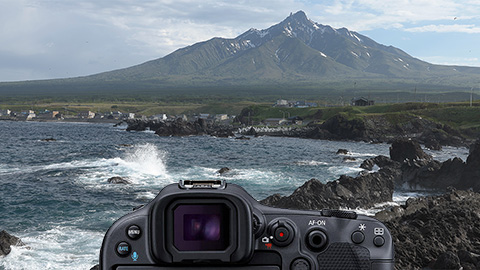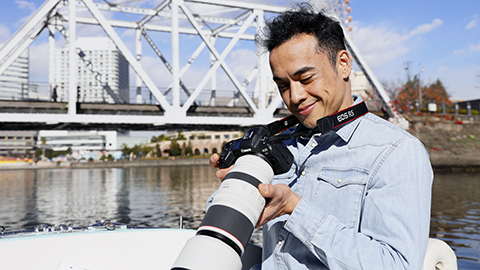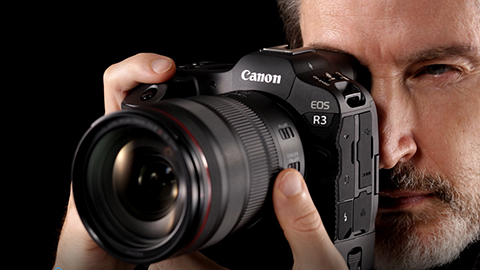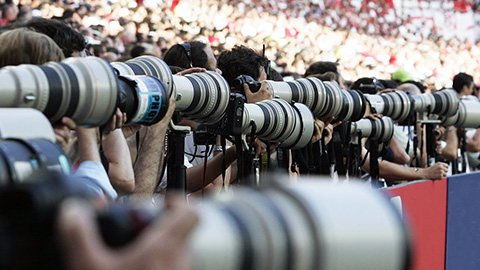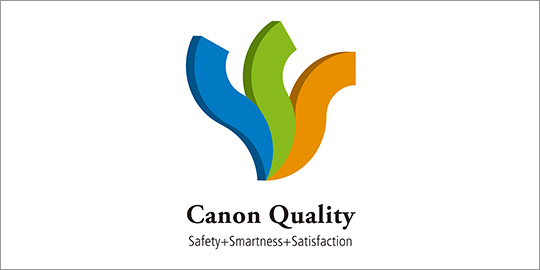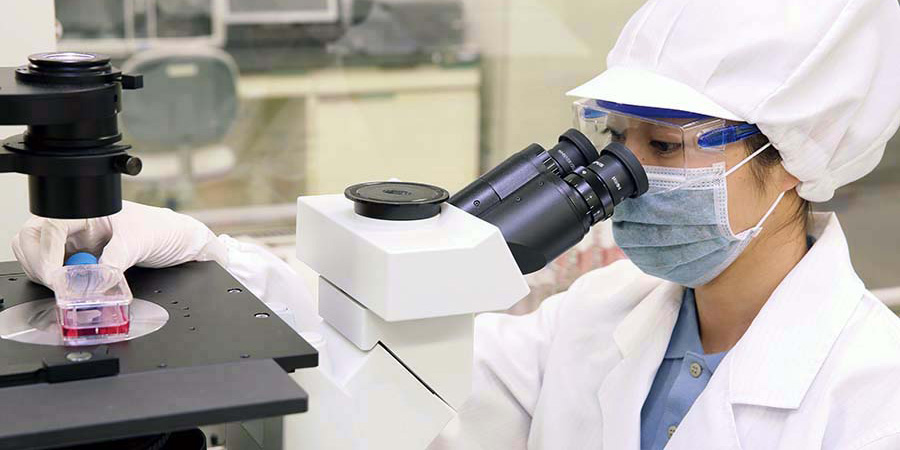Maintaining Trust in the Canon BrandVol.4 Revamped eye control AF that transcends the ages – Focusing on what you’re following
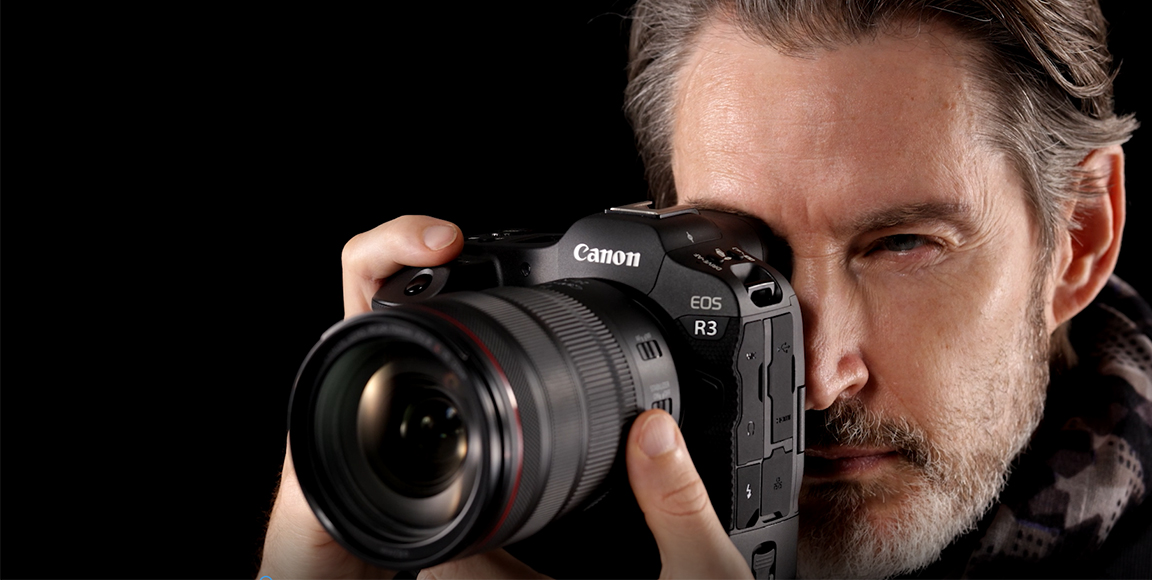
"I wish I could focus exactly on what I'm looking at."
Anyone who's captured photos has surely dreamed of using such a high-quality camera at some point or another. As digital cameras evolve and advance with time, the autofocus (AF) systems that make photography more pleasant for users have also supported gradually wider areas of the image capture screen. AF for the entire screen was finally realized with the EOS R5, released in July 2020, enabling subjects to be tracked with AF and captured no matter where on the screen they appeared. Now users wanted the ability to choose where to place the AF point (the area for focusing).
One of the input technologies that solved this problem is the much-discussed "eye control AF" that allows users to focus wherever they look.
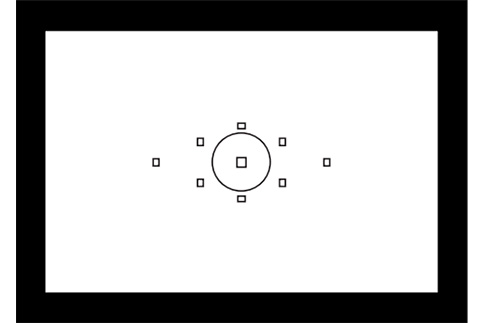
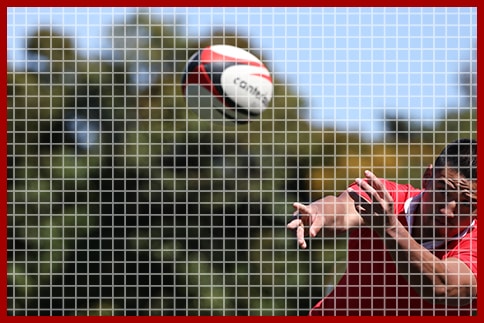
Quickly focusing on whatever's in view
So how does photography change, now that it's possible to track sight when using digital cameras?
Canon cameras support AF methods including a touch-panel screen that lets users touch the area they want to focus on, as well as the ability to move the AF point using the multi-controller. However, with eye control AF, the camera immediately focuses on whatever the user is looking at, helping make sure they never miss crucial moments. This leaves them free to fix their attention only on what they see through the viewfinder.
Imagine focusing on athletes as they compete at sports events, or switching between individual machines when photographing a motorsports race...there’s no limit to the potential ways to use eye control AF!
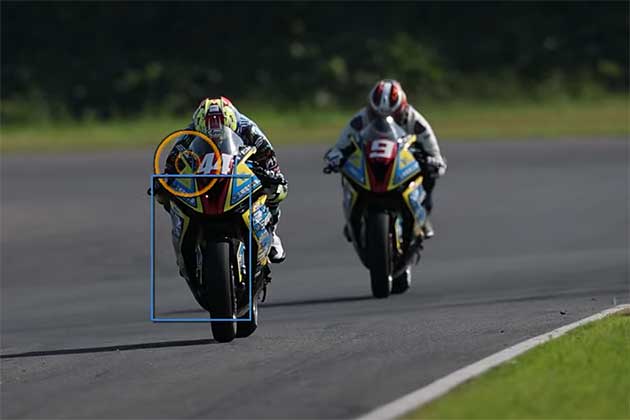
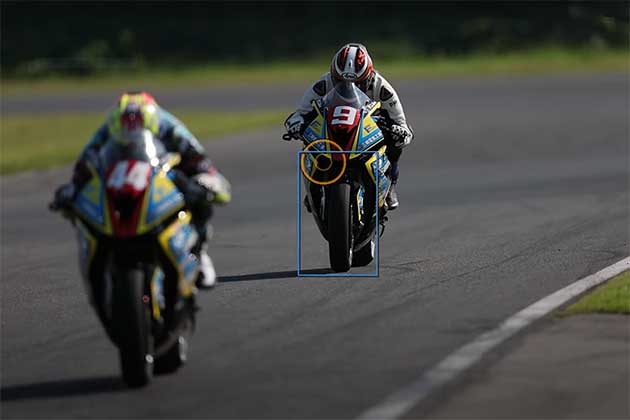
- *With default camera settings, the orange circle (pointer) display can be toggled by half-pressing the shutter button
Previously installed eye control AF
Impressive, to be sure, but did you know Canon had already succeeded in developing eye control AF in the 90's? This revolutionary technology was included in analog SLR cameras and camcorders, and attracted a great deal of attention. However, the technology was still fraught with challenges—accuracy varied from person to person, some users experienced eye strain and slight eye movement during shooting sometimes caused the focus to shift or blur. As digital SLR cameras emerged and features like multi-controllers were added to cameras, eye control AF technology was shelved for the time being.
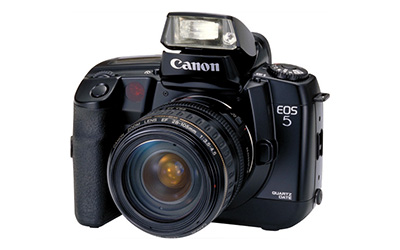
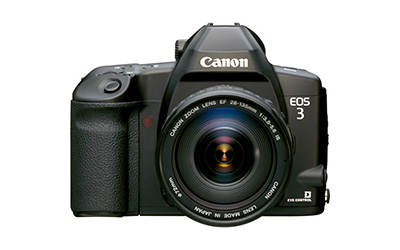
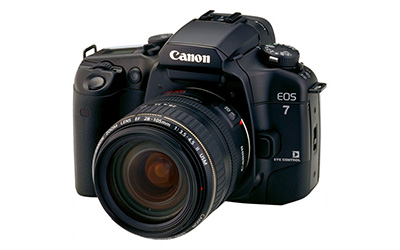
Aided by the advent of mirrorless cameras and the digital age
As mirrorless cameras became increasingly popular, Canon developers began to think "Now we can finally achieve eye control AF that will meet users' needs."
Thanks to the high-pixel-count OLED panel employed in electronic viewfinders (EVF) used by mirrorless cameras, lots of useful information can now be displayed on the viewfinder screen. A pointer can be used to indicate users' focus position, thus enabling eye control AF that is significantly easier to use. And unlike DSLR cameras, whose AF areas are mainly confined to the center of the screen, Canon cameras beginning with the EOS R series feature much wider AF areas that match eye control AF well.
As new technologies emerged in the digital camera age, including subject-detection and eye-detection AF, subjects are now easier to detect, even if users' eye focus drifts away from the subject. In addition, subjects targeted with eye control AF can be followed with subjects tracking technology. The camera can now do the work of following the subject, without users having to keep their eyes focused on a moving target. Thanks to this advancement, in-focus shots can be captured nearly 100% of the time.
Finally, in November 2021, eye control AF returned with its inclusion in the EOS R3 camera.
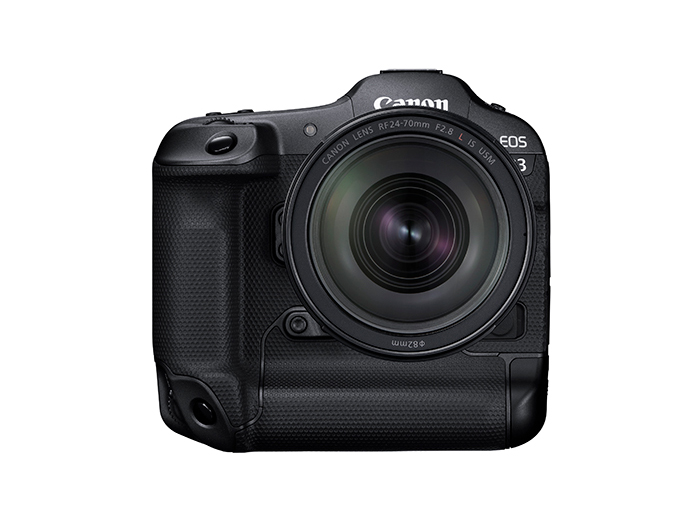
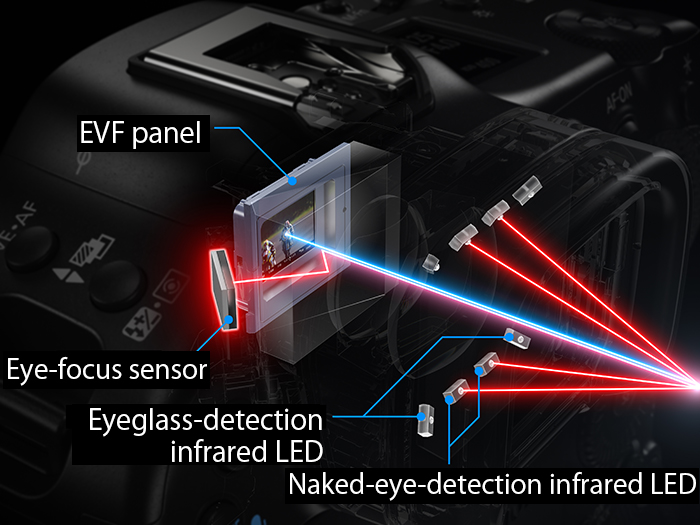
What proved most useful in the development process were the facts that the researchers who developed the earlier version of eye control AF remained, and the documentation they produced was preserved. They possessed a wealth of experience and knowledge—how to draw principle diagrams and mechanical designs, how to code the programming and myriad other processes, along with comments on how to make things operate smoothly, which aspects had proved challenging and which users experienced difficulties with Line-of-Sight detection. This in turn helped maintain an extremely smooth and streamlined process, guiding development efforts and maintaining a focus on improving quality.
Bringing eye control AF to more people through greater quality
The subtle differences in each individual user’s eyes have remained a roadblock for developers. Whether it be the thickness of eyelids, length of eyelashes or other such features, no two persons’ eyes are the same. Further complicating matters is the fact that the use of eyeglasses and even the way in which users hold their camera mean that the distance between the eye and the camera viewfinder also differs. In order to address this challenge, Canon has held diverse focus groups and recruited hundreds of test users in order to determine the quality of its technology. Through user tests and repeated trial and error under challenging conditions, Canon reconfirmed such difficulties as shooting while wearing eyeglasses. Developers even went so far as to create an “artificial eyeball” for use in trials. By considering every possible factor or condition and performing repeated testing, Canon has improved the quality of its eye control AF so that more people can use it with ease.
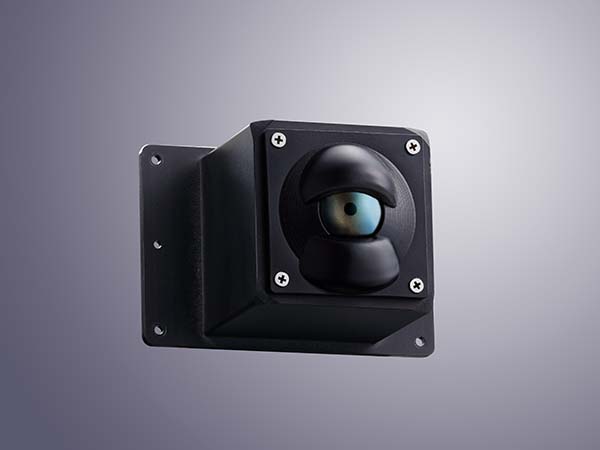
Eye control AF has at last been added to cameras in the digital age. Canon, in its ongoing pursuit of helping users capture the best possible photo, will continue to expand the possibilities of visual expression.




